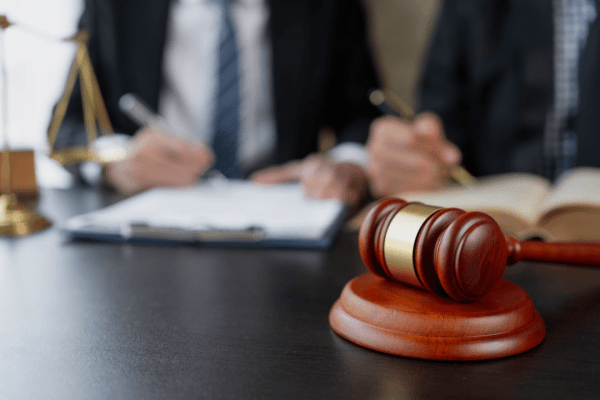
0 Tax Owed Debt Relief Program: Eligibility, Benefits, and Next Steps
0 Tax Owed Debt Relief Program: What You Need to Know
The 0 tax owed debt relief program is designed for individuals who may no longer owe current taxes but still have unresolved issues with the IRS from previous years. Even if your current balance is $0, you might still have tax liens, penalty charges, or records of past debt that could affect your financial future. This program helps eligible taxpayers clear their record and move forward with confidence.
What Is the 0 Tax Owed Debt Relief Program?
The program isn’t a single named IRS initiative but refers to a collection of relief options available to taxpayers with no current debt but unresolved IRS records or historical issues.
Overview of IRS Fresh Start and Related Programs
The Fresh Start Initiative and other IRS hardship programs allow certain taxpayers to resolve old debt through penalty abatement, lien withdrawal, or uncollectible status—even if the taxpayer currently owes nothing.
How “0 Tax Owed” Cases Still Involve Prior Debt
You may have already paid or satisfied your tax debt, but penalties or unresolved account notations may still exist. These can trigger automated collection notices or complicate future filings. A qualified tax debt relief attorney can help determine if your case needs further resolution.
Why This Program Targets Low-Income or Non-Liable Taxpayers
Many taxpayers who qualify are retirees, students, disabled individuals, or people who’ve previously faced financial hardship. They may not owe anymore but need to close their IRS account status officially.
Who Qualifies for This Program?
Qualification depends on your financial status, IRS account history, and whether there are unresolved penalties or inactive liens.
Criteria for Eligibility (Income, Filing History, Hardship)
To be considered, you must:
- Have no current tax owed but previous unresolved issues
- Be in compliance with current filing requirements
- Demonstrate limited income or hardship, especially if requesting further relief
Cases With Previously Assessed Debts but No Current Balance
This includes cases where:
- Tax was paid, but penalties or interest were never removed
- Debt was discharged in bankruptcy, but account closure was never finalized
- The taxpayer was mistakenly assigned responsibility (e.g., injured spouse)
For more information on bankruptcy and tax record cleanups, visit BankruptcyAttorneys.net.
Supporting Documentation Needed
You may need IRS account transcripts, copies of prior notices, proof of income, or prior payment records to prove your case.
What Types of Relief Are Offered?
Even with a $0 balance, you can still request relief for outstanding penalties, remove liens, or ensure your account is marked closed by the IRS.
Penalty Abatement and Interest Reduction
You can request a first-time abatement or a reasonable cause penalty abatement using Form 843 if penalties were never formally removed.
Currently Not Collectible (CNC) Status
If you still have uncollectible penalties or historical debt marked on your record, CNC status can prevent collections and ensure your account reflects no further liability.
Lien Withdrawal or Account Closure
Liens can remain on public record even after tax is paid. Requesting a lien withdrawal or certificate of release ensures the IRS no longer lists you on public tax lien databases.
How to Apply for 0 Tax Owed Debt Relief
Applying for relief involves verifying your IRS records, identifying what’s unresolved, and submitting the proper forms.
Requesting IRS Transcripts and Verifying Account Status
Start by requesting your IRS account transcript through IRS.gov. Review the transcript for:
- Any open collections or liens
- Notations about penalties or past due amounts
- Official account closure status
Forms You May Need to Submit (e.g., 433-F, 843, 656)
- Form 843: To request abatement of penalties or interest
- Form 433-F: To demonstrate financial hardship if necessary
- Form 12277: To request lien withdrawal
- Form 656: To file an Offer in Compromise if a small balance remains
When to Seek Help From a Tax Professional
Because these situations often involve outdated or partial IRS records, a tax professional can help you:
- Interpret transcripts
- Submit properly completed forms
- Communicate with the IRS for status updates
Working with a provider like Legal Brand Marketing can connect you to qualified attorneys offering assistance with historical tax debt cleanups.
The 0 Tax Owed Debt Relief Program May Offer a Fresh Start If You Qualify
The 0 tax owed debt relief program exists to help taxpayers clear their IRS records—even when no current debt is owed. Whether you’re trying to remove a lien, fix an unresolved penalty, or simply get your account officially marked as closed, this type of relief helps you avoid future disruptions. With the right documents and guidance, you can take control of your tax history and move forward confidently.
Find Out If You Qualify for the 0 Tax Owed Debt Relief Program Today
If you’re unsure about your IRS status or think there may be unresolved issues on your record despite having a $0 balance, it’s time to act. A licensed tax relief expert can review your transcripts, request necessary updates, and help file for appropriate relief programs.
Contact us today at TaxDebtLawyer.net to start your case review and take the next step toward financial peace of mind.
Frequently Asked Questions (FAQs)
1. What is the 0 tax owed debt relief program?
It’s a collection of IRS options to resolve historical tax issues even when your current balance is zero.
2. Can I qualify if I no longer owe current taxes?
Yes. If past penalties, liens, or other account issues remain, you may still be eligible for relief.
3. Will this program remove IRS liens or past penalties?
Yes, if you qualify, you can request a lien withdrawal or penalty abatement even after your debt is paid.
4. What if my tax debt was discharged in bankruptcy?
You may still need to request formal account closure or lien release to finalize your IRS record.
5. How long does the process take once I apply?
Depending on the type of request, it can take a few weeks to several months for full resolution.
Key Takeaways
- The 0 tax owed debt relief program helps clear IRS records for past debt issues.
- You can still be affected by liens or penalties even if your balance is $0.
- Relief may include account closure, CNC status, or penalty abatement.
- IRS forms like 843, 12277, or 433-F are often required.
- A tax professional can help resolve these issues efficiently and correctly.
Free Tax Case Review
If you are struggling with tax debt or have received a letter from the IRS complete the form below.IRS Audit
You received an audit notice from the IRS
Tax Debt Relief
You owe the IRS money and are looking for relief options
Wage Garnishment
The IRS is taking part of your wages to pay off your debt
Tax Lien
The IRS put a legal claim on your property
IRS Property Seizure
The IRS is going to take your property to pay down or pay off your tax debt
Penalty Abatement
You want to request to remove or reduce penalties assessed by IRS
Innocent Spouse Relief
Relief from joint tax debt caused by your spouse or former spouse
Tax Debt FAQ
Common facts, questions and answers about tax debt and tax debt reilef
Tax Debt Lawyer
A tax debt lawyer can help you with your tax debt problems



